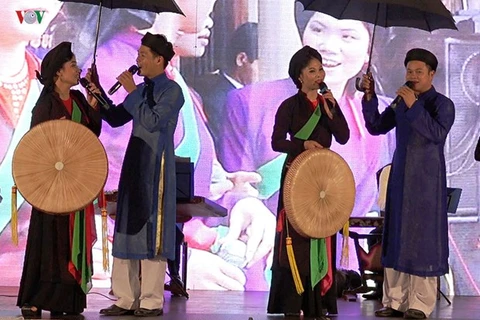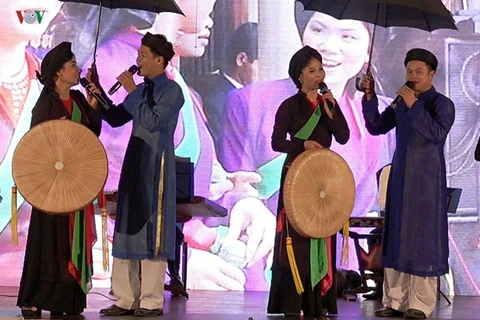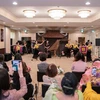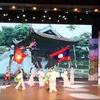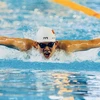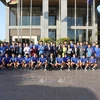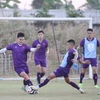Hanoi (VNA) - Perhaps not only the Vietnamese people but also many foreigners who love Vietnam can sing the touching Quan Ho (love duets) passionately.
In the past, Kinh Bac was a region located on the northern bank of the Red River, facing the capital city of Thang Long (present-day Hanoi). It comprised the entire territory of the current provinces of Bac Ninh and Bac Giang, as well as the districts of Dong Anh, Soc Son, and Gia Lam in Hanoi, and the districts of Van Giang and Van Lam in Hung Yen province.
Originally, Quan Ho singing was only found on the southern bank of the Cau River in Bac Ninh province. However, due to its significant influence, it spread to neighbouring areas on the northern bank of the Cau River in Bac Giang province. The Cau River is also known as the Quan Ho river.
According to the Department of Culture of Ha Bac (now split into Bac Ninh and Bac Giang provinces), before the August Revolution in 1945, there were 49 Quan Ho villages scattering across the districts of Tien Son, Yen Phong, Que Vo, Viet Yen, and the town of Bac Ninh. These villages were home to thousands of folk songs with simple lyrics, carrying a unique and ancient beauty that is truly Vietnamese. Each Quan Ho village in Bac Ninh had its own distinctive characteristics.
There are opinions suggesting that Quan Ho dates back to the 11th century, while others believe it originated in the 17th century. All of them emphasise the significant value of the intangible cultural heritage of Quan Ho. This art form is considered the core of the culture of the Kinh Bac region, with a history of thousands of years of civilisation.
Compared to other forms of folk art such as "hat xoan", "hat gheo", "hat cheo", "hat ca tru", "hat vi dam", "tuong", and "cai luong", Quan Ho singing has existed the longest, with a lifespan of thousands of years.
Quan Ho is a form of folk singing characterised by a duet format. The male singers, known as "lien anh", wear traditional attire of folded scarves and "the" shirts, while the female singers, known as "lien chi", don elegant dresses and round hats made from palm leaves with long silk straps. They sing together in pairs, delivering simple and soulful verses in a traditional style that does not require musical accompaniment yet remains melodious. The singing showcases the refined cultural essence of the Quan Ho community.
Most Quan Ho songs follow the verse form of "luc bat" or its variations, and there are also songs in prose form. Up to now, at least 300 melodies of Quan Ho have been notated, consisting of verses and poems, primarily in the "luc bat" form, passed down by Quan Ho artists to collectors.
In 2009, with its exemplary and distinctive cultural values, Bac Ninh’s Quan Ho folk songs were inscribed by UNESCO into the Representative List of the Intangible Cultural Heritage of Humanity. The expert panel highly praised Quan Ho for its cultural value, social customs, artistic performance, singing techniques, cultural manners and etiquette, language, and traditional attire.
Every year as spring arrives, people from Quan Ho villages in the Kinh Bac region, including both Bac Ninh and Bac Giang provinces, return to their hometowns to join various local festivals, such as temple and pagoda ones. These festivals are incredibly unique because they have been closely associated with the tradition of Quan Ho singing for generations.
Even as time goes by, the verses of Quan Ho continue to be passed down from one generation to another. Its enduring vitality and presence, along with the heartfelt melodies, still captivate and leave a lasting impression on visitors./.




